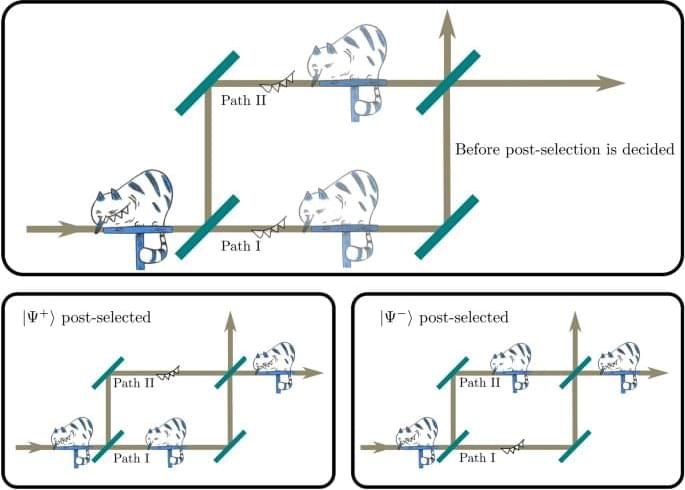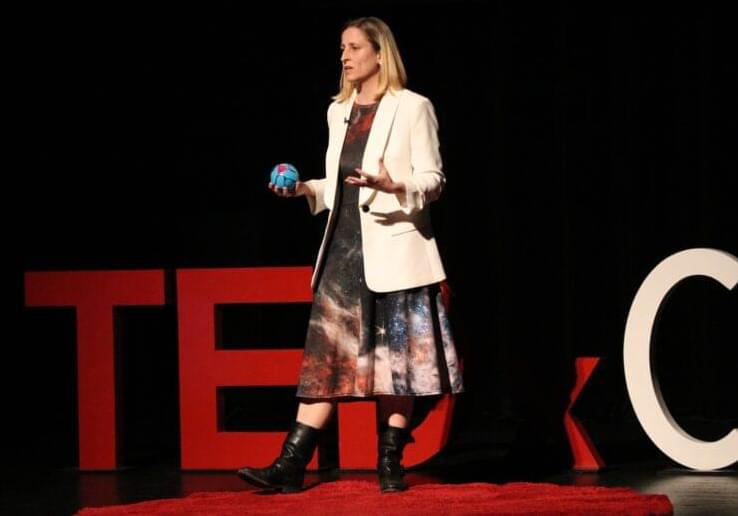Most experts think we have to tweak general relativity to fit with quantum theory. Physicist Jonathan Oppenheim isn’t so sure, which is why he’s made a 5000:1 bet that gravity isn’t a quantum force.


Most experts think we have to tweak general relativity to fit with quantum theory. Physicist Jonathan Oppenheim isn’t so sure, which is why he’s made a 5000:1 bet that gravity isn’t a quantum force.



How can we combat data theft, which is a real issue for society? Quantum physics has the solution. Its theories make it possible to encode information (a qubit) in single particles of light (a photon) and to circulate them in an optical fiber in a highly secure way. However, the widespread use of this telecommunications technology is hampered in particular by the performance of the single-photon detectors.
A team from the University of Geneva (UNIGE), together with the company ID Quantique, has succeeded in increasing their speed by a factor of twenty. This innovation, published in the journal Nature Photonics, makes it possible to achieve unprecedented performances in quantum key distribution.
Buying a train ticket, booking a taxi, getting a meal delivered: these are all transactions carried out daily via mobile applications. These are based on payment systems involving an exchange of secret information between the user and the bank. To do this, the bank generates a public key, which is transmitted to their customer, and a private key, which it keeps secret. With the public key, the user can modify the information, make it unreadable and send it to the bank. With the private key, the bank can decipher it.

In 2022, the physics Nobel prize was awarded for experimental work showing that the quantum world must break some of our fundamental intuitions about how the Universe works.
Many look at those experiments and conclude that they challenge “locality” – the intuition that distant objects need a physical mediator to interact. And indeed, a mysterious connection between distant particles would be one way to explain these experimental results.
Others instead think the experiments challenge “realism” – the intuition that there’s an objective state of affairs underlying our experience. After all, the experiments are only difficult to explain if our measurements are thought to correspond to something real.

The Eqs. (3a) and (3b) suggest two important features of the location of neutrons and the spin by switching the choice of the post-selection: (i) The first lines indicate that the neutrons are found to be localized in different paths by switching the choice of the post-selection; they are found in the path I and II by applying the post-selection \({|{\Psi ^{+}_f}\rangle }\) and \({|{\Psi ^{-}_f}\rangle }\), respectively. (ii) The lines of the second part of the equations indicate that the spin in the different paths is found to be affected by switching the choice of the post-selection; the spin in path II and I is affected by applying the post-selection \({|{\Psi ^{+}_f}\rangle }\) and \({|{\Psi ^{-}_f}\rangle }\), respectively. Note that, in both choices of the post-selection, neutron and spin are localized in different paths, i.e., the location of the cat itself and its grin are interchanged by switching the choices of the post-selection. Since measurement of the locations of the neutron and the spin in the interferometer can be carried out independently of the delayed-choice process, the picking of a direction for post-selection, the influence of the delayed-choice on the preceding measurements can be investigated. We would like to point out that the experimental proposal in a recent publication35, contains a delayed choice scenario, too. The difference to the experiment presented in this report is that the authors of35 suggest a setup where two properties of the same system, represented by two non-commuting observables, are separated. In contrast to that, we deal in our experiment with the separation of one property from the system itself, hereby constituting the phenomenon of disembodiment. Further we would like to point out that in their Gedanken-experiment the effect of a change in the pre-selection is discussed that in our view has no retro-causal implications.
The experiment was carried out at the S18 silicon-perfect-crystal interferometer beam line at the high flux reactor at the Institute Laue Langevin. A schematic view of the experimental set-up is shown in Fig. 2.

Year 2014 face_with_colon_three If black holes have infinitely small sizes and infinitely density this also means that string theory would also solve the infinitely small problem because now we know that infinitely small sizes exist and if that exists then so does infinite energy from super string essentially filling out the rest of the mystery of the God equation. This means that computers could be infinitely small aswell saving a ton of space aswell.
If you’ve wondered how big is a black hole? then you’ve come to the right place! Learn about the sizes of black holes and the multi-layered answer.
The Big Bang may have not been alone.
The Big Bang may not have been alone. The appearance of all the particles and radiation in the universe may have been joined by another Big Bang that flooded our universe with dark matter particles. And we may be able to detect it.
In the standard cosmological picture, the early universe was a very exotic place. Perhaps the most momentous thing to happen in our cosmos was the event of inflation, which at very early times after the Big Bang, sent our universe into a period of extremely rapid expansion. When inflation ended, the exotic quantum fields that drove that event decayed, transforming themselves into the flood of particles and radiation that remains today.
When our universe was less than 20 minutes old, those particles began to assemble themselves into the first protons and neutrons during what we call Big Bang Nucleosynthesis. Big Bang Nucleosynthesis is a pillar of modern cosmology, as the calculations behind it accurately predict the amount of hydrogen and helium in the cosmos.

Dr. Emily Rice, an Associate Professor of Astrophysics at the Macaulay Honors College of CUNY and resident research associate in the Department of Astrophysics at the American Museum of Natural History (AMNH), is one of the keynote speakers at the TEDxCUNY conference to be hosted on March 10, 2023.
Dr. Rice is extremely involved in the scientific community through her role as a researcher and professor. Dr. Rice co-founded the research group Brown Dwarfs in New York City (BDNYC) with Dr. Kelle Cruz from CUNY Hunter College and Dr. Jackie Faherty from AMNH. Brown Dwarfs are objects that have masses between giant exoplanets and low mass stars. Dr. Rice explained there was a lot about Brown Dwarfs that scientists were yet to explore and understand.
“The three of us started this research group following a small project we had collaborated on,” Dr. Rice said. In 2010, Dr. Cruz had started their work with Hunter College, Dr. Rice was wrapping up her postdoctoral work, and Dr. Faherty was finishing up graduate school. “We all happened to be in New York City at the time, and we were all working with Brown Dwarfs, so we decided to create a research group focused on these substellar objects,” Dr. Rice remarked.
A team of researchers led by the University of Innsbruck have observed a quantum tunneling effect in experiments that build off 15 years of research into such reactions and marks the slowest charged particle reaction ever observed until now. But while such chemical reactions have only been theoretical up to this point, can it be achieved in real-world experiments?
“It requires an experiment that allows very precise measurements and can still be described quantum-mechanically,” said Dr. Roland Wester, who is a professor of theoretical *physics at the University of Innsbruck, and lead author of the study. “The idea came to me 15 years ago in a conversation with a colleague at a conference in the United States.”